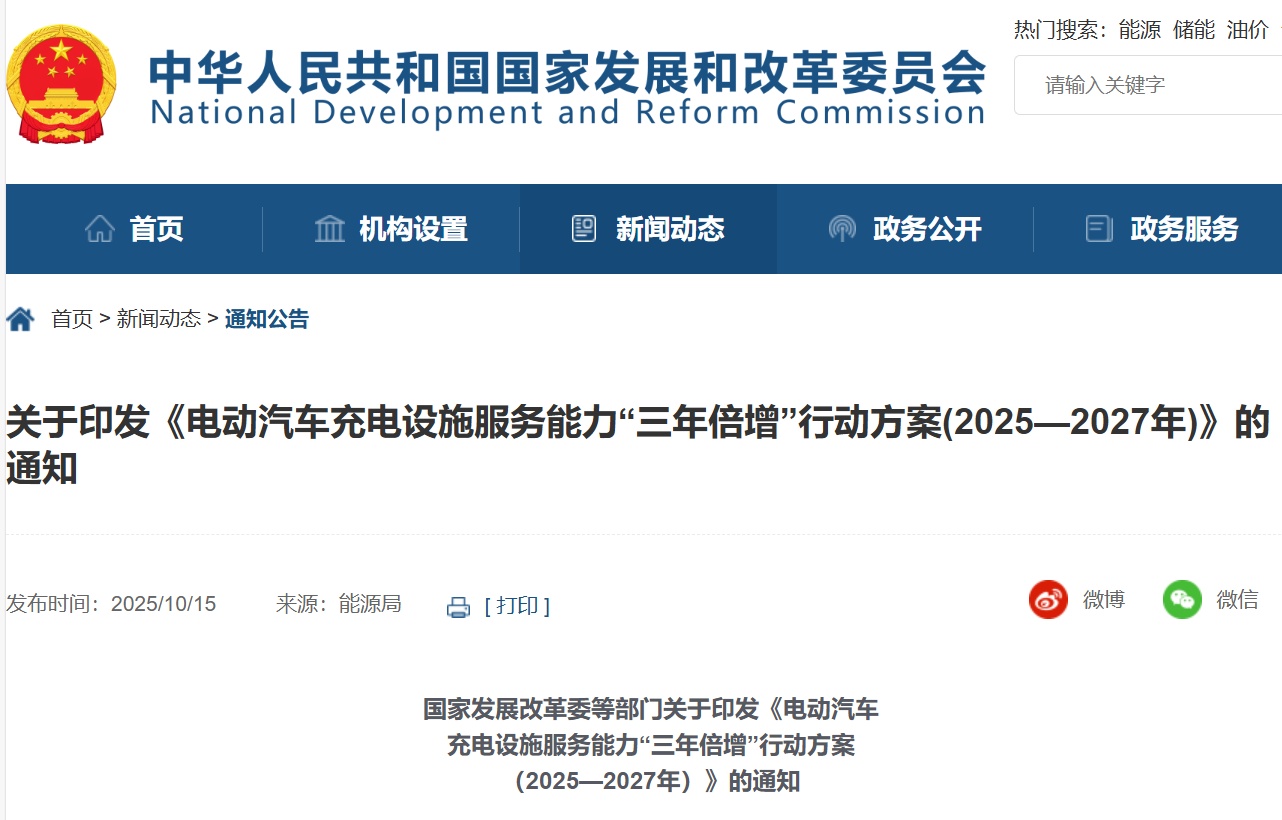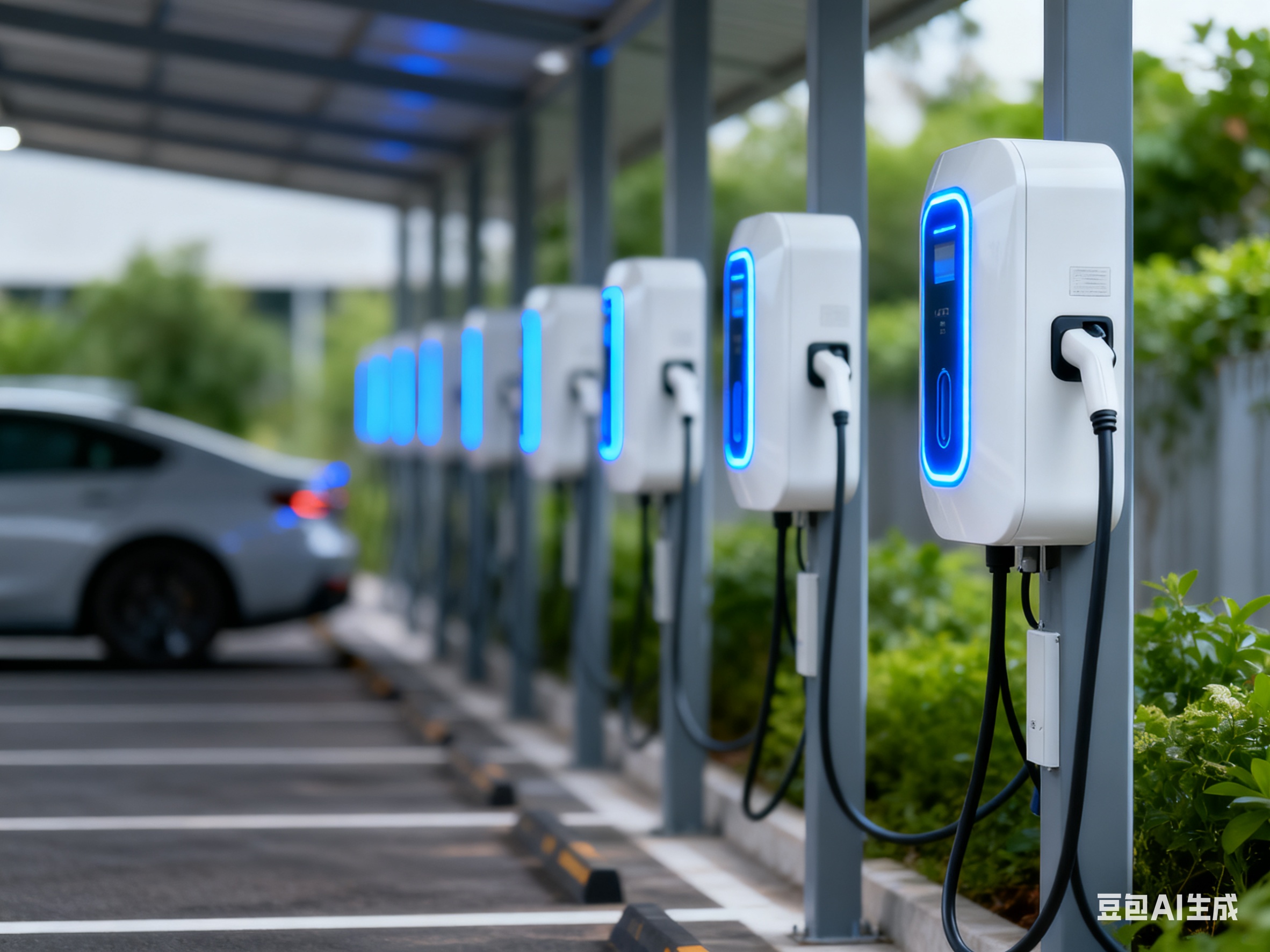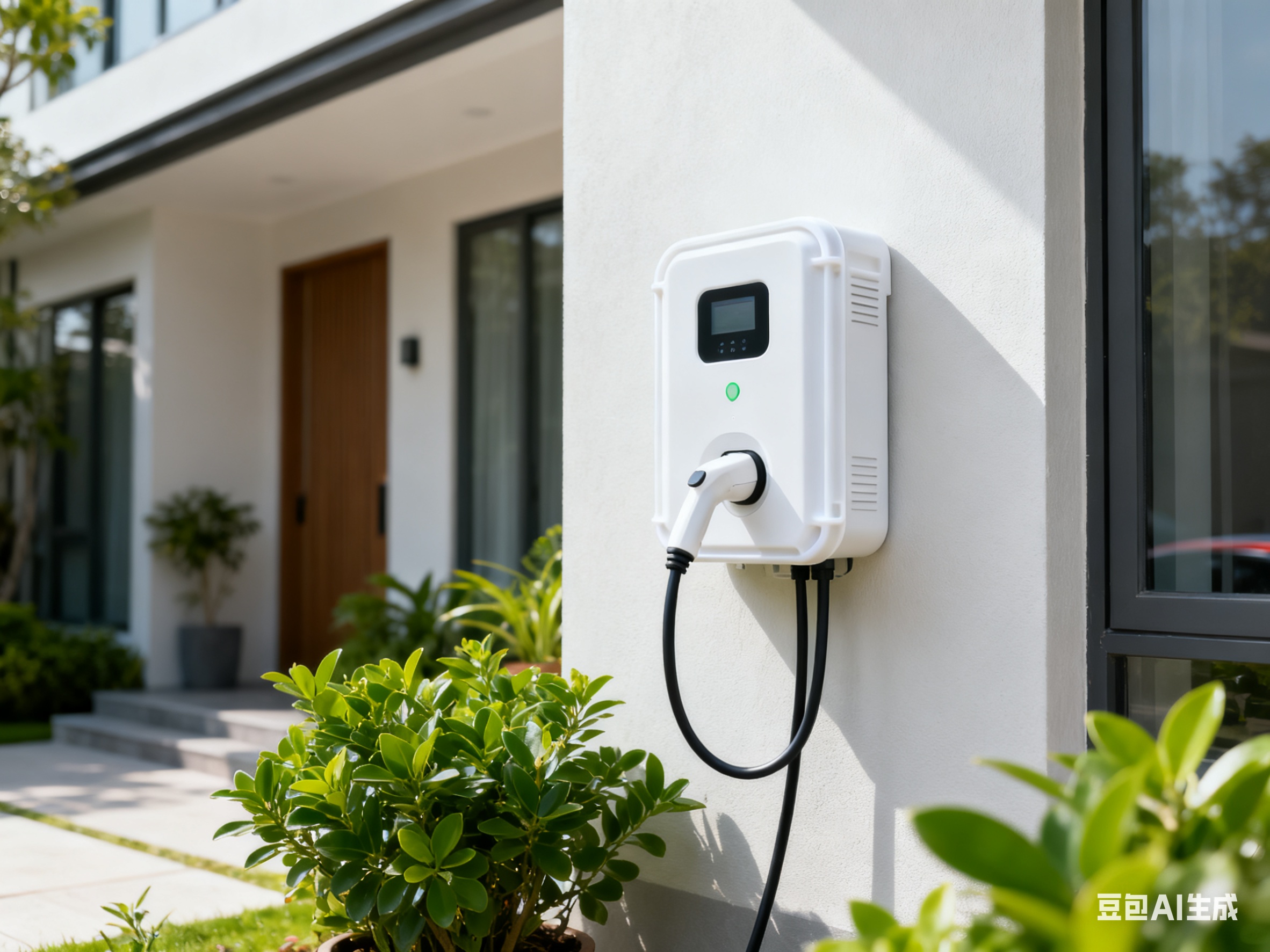National Development And Reform Commission And Other Departments: By 2027, 28 Million Charging Facilities To Be Completed! This Type Of Material May Become A Big Winner
On October 15, the National Development and Reform Commission and other departments issued the "Three-Year Doubling Action Plan for Electric Vehicle Charging Facility Service Capacity (2025-2027)", proposing that by the end of 2027, 28 million charging facilities will be built nationwide, providing over 300 million kilowatts of public charging capacity, meeting the charging needs of over 80 million electric vehicles, and achieving a doubling of charging service capacity.
Construct an urban public charging network primarily based on fast charging, supplemented by slow charging and high-power charging, to achieve comprehensive coverage of all types of parking scenarios in the city. Carry out updates and renovations of AC charging facilities, facilities older than 8 years, and charging facilities with voltage platforms below 800 volts.
By the end of 2027, 40,000 new or renovated "ultra-fast combination" charging guns of 60 kilowatts or more will be built in highway service areas (including rest areas), and the construction of high-power charging facilities will be encouraged.
Increase the scale of private charging facility construction. Promote the "unified construction and unified service" model in residential areas. By the end of 2027, establish 1,000 pilot communities for "unified construction and unified service," significantly improving the access volume and safety management level of private charging piles.
Incorporate the demand for connecting charging facilities into the distribution network planning, focusing on urban core areas, highway service areas, transportation hubs, township clusters, and old residential communities. Address issues such as weak grid structures and low power supply capacity by optimizing the distribution network framework and implementing capacity expansion and other construction modifications in distribution areas.
Actively expand the channels for handling electricity business related to electric vehicle charging facilities, and accelerate the promotion of online channels such as mobile applications (APP) and websites.

1. Core Component Manufacturing: High-Performance Plasticizing Materials Become a Necessity
The demand for charging pile body materials has surged.
The construction target of 28 million charging facilities will directly drive massive demand for specialized modified plastics for charging piles. Core components such as charging pile casings and internal insulation parts need to simultaneously meet multiple performance requirements, including flame retardancy, weather resistance, and anti-aging. Flame-retardant PC/ABS alloys have become the mainstream choice—these materials combine the high toughness of PC with the processing ease of ABS and, after RoHS certification, can withstand extreme temperature differences from -40°C to 60°C outdoors. They also achieve a flame retardancy rating of UL94 V-0, effectively reducing the risk of fire caused by electrical faults. Based on the estimation that each charging pile consumes 20-30 kg of modified plastics, the newly added facilities alone will generate a demand for 560,000 to 840,000 tons of materials. Coupled with the renovation and replacement of old facilities, the market size is expected to break through once again.
The construction of 40,000 "ultra-fast combined" charging guns in highway service areas imposes stringent requirements on the heat resistance and insulation properties of materials. In high-power charging scenarios above 60 kW, the temperature of the gun head can rise to 120°C. Glass fiber-reinforced flame-retardant PA, with a heat deformation temperature of 220°C and excellent wear resistance during plugging and unplugging, has become the preferred material for the gun head body. Meanwhile, ultra-fast charging systems rely more on the arc resistance properties of enhanced flame-retardant PBT, whose insulation strength can withstand the instant high-voltage impact during high-power charging. The unit price of these high-end modified plastics is 30%-50% higher than that of ordinary materials, and is expected to drive an increase in the industry's added value.

Scene-based construction: Stimulating incremental growth in segmented markets.
"Unified Construction and Unified Service" Model's Scale Dividend
The promotion of "unified construction and unified service" in 1,000 pilot communities (referencing the Chengdu model, with an average of 10 charging terminals per community) will create a demand for standardized plastic components procurement. Community charging piles mostly adopt a centralized design, and their shared cabinets need to be waterproof and dustproof. Modified PP is the core material for cabinet panels due to its controllable cost and chemical corrosion resistance. Meanwhile, the load control module of the intelligent orderly charging system requires a flame-retardant PC/ABS for the insulation shell to ensure electrical safety during load adjustment. Large-scale procurement will drive plastic enterprises to establish specialized production lines, reducing unit costs by more than 15%.
Demand for Supporting Materials in Distribution Network Renovation
In the upgrade of power distribution networks in urban core areas and old residential areas, components such as cable insulation layers and junction boxes rely on plastic materials for support. The cables used for capacity expansion in transformer areas need to employ flame-retardant PE materials, with a volume resistivity of over 10¹⁴Ω·m, to prevent safety hazards caused by current leakage. Meanwhile, outdoor distribution boxes generally use weather-resistant ABS, which is enhanced by adding UV inhibitors to extend their lifespan to over 10 years, aligning with the long-term requirements of power grid renovation.

III. Industry Upgrade: Policy-Driven Technological and Capacity Transformation
Precise matching of material properties
The emphasis on the safety of charging facilities in policies is driving plastic companies to break through key technologies. For example, for the renovation of facilities over 8 years old, companies need to develop recyclable flame-retardant materials to achieve the circular use of "old pile materials - recycling and regeneration - new part manufacturing." Meanwhile, charging piles in township clusters require specialized modified materials that are resistant to humidity and mold to address the corrosion issues in rural scenarios. Leading companies have currently launched customized charging pile material services, allowing the adjustment of formula parameters based on regional climates.
Regional cooperation in capacity layout
In response to the requirement for "full coverage" of charging facilities, plastic manufacturers are accelerating the downward expansion of their production capacity. Modified plastic industrial clusters in Yuyao, Qingdao, and other areas have planned to set up production lines for charging pile materials with an annual output of 100,000 tons, targeting the construction of charging networks in the Yangtze River Delta and the Bohai Rim. At the same time, they are planning small and medium-sized modified material processing plants around the gathering areas of towns in the central and western regions to shorten the supply chain radius and meet the urgent needs of old community renovations.
【Copyright and Disclaimer】This article is the property of PlastMatch. For business cooperation, media interviews, article reprints, or suggestions, please call the PlastMatch customer service hotline at +86-18030158354 or via email at service@zhuansushijie.com. The information and data provided by PlastMatch are for reference only and do not constitute direct advice for client decision-making. Any decisions made by clients based on such information and data, and all resulting direct or indirect losses and legal consequences, shall be borne by the clients themselves and are unrelated to PlastMatch. Unauthorized reprinting is strictly prohibited.
Most Popular
-

List Released! Mexico Announces 50% Tariff On 1,371 China Product Categories
-

Nissan Cuts Production of New Leaf EV in Half Due to Battery Shortage
-

New Breakthrough in Domestic Adiponitrile! Observing the Rise of China's Nylon Industry Chain from Tianchen Qixiang's Production
-

Dow, Wanhua, Huntsman Intensively Raise Prices! Who Controls the Global MDI Prices?
-

Mexico officially imposes tariffs on 1,400 chinese products, with rates up to 50%






